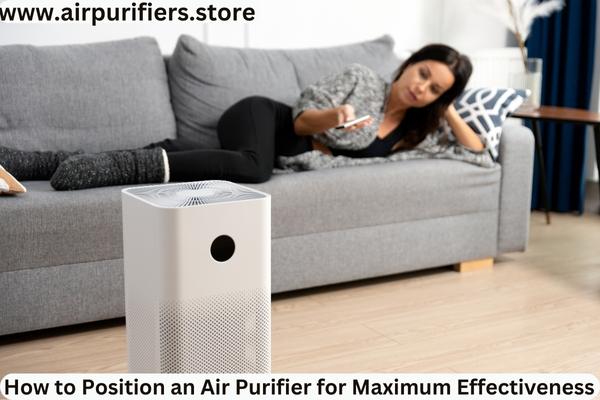Air purifiers have become increasingly popular in homes and offices as people seek cleaner and healthier indoor air. However, did you know that the placement of an air purifier plays a crucial role in its overall effectiveness?
This blog post will discuss the key factors to consider when positioning an air purifier to ensure you get the most out of its purification capabilities.
1. Identify Problem Areas:
Before placing your air purifier, it is essential to identify the problem areas in your space. Observe where dust, allergens, or odours seem to accumulate the most. Common problem areas include near pet beds, kitchen areas, or windows with high outdoor pollution levels. Identifying these areas will help you determine the optimal placement for your air purifier.
2. Centralized Location:
For maximum effectiveness, it is generally recommended to place the air purifier in a centralized location within the room. This allows for better airflow and circulation throughout the space. Consider placing the purifier where it can pull in air from multiple directions and distribute it evenly.
3. Keep Obstructions at Bay:
To ensure unrestricted airflow, keep the area around your air purifier clear of obstructions. Avoid placing it against walls, furniture, or curtains, as these can impede the intake and outflow of air. Maintaining a clear space around the cleaner allows it to capture airborne particles more effectively and ensures efficient operation.
4. Avoid Drafts and Ventilation:
While ensuring proper airflow is important, it’s equally crucial to avoid placing the air purifier directly in the path of drafts or strong ventilation sources. These can interfere with the cleaner’s intake and disrupt its performance. Additionally, avoid placing the purifier near open windows or doors where outdoor pollutants can easily enter the room.
5. Consider Room Size and Purifier Capacity:
The size of the room plays a role in determining the effectiveness of an air purifier. Larger rooms may require purifiers with higher Clean Air Delivery Rate (CADR) ratings or multiple units to cover the entire space adequately. Refer to the cleaner’s specifications and match it to the recommended room size for optimal performance.
6. Height Placement:
While most air purifiers are designed to be placed on the floor, elevating them off the ground can be beneficial. This prevents dust and debris from settling on the purifier, potentially affecting its performance. Consider using a stable and elevated surface like a table or a shelf to position the purifier.
7. Regular Maintenance:
Positioning an air purifier for maximum effectiveness also involves regular maintenance. Follow the manufacturer’s instructions for filter replacement and cleaning schedules. Clogged filters can hinder the purifier’s performance, so keeping them clean and replacing them as recommended is crucial.
Conclusion:
Proper placement of an air purifier is key to maximizing its effectiveness in purifying the air in your home or office. You can ensure optimal performance and cleaner indoor air by identifying problem areas, choosing a centralized location, keeping obstructions at bay, and considering room size and capacity.
Remember to regularly maintain and clean your air purifier to keep it operating efficiently. With these tips, you can enjoy the benefits of cleaner and healthier air in your living or working space.


